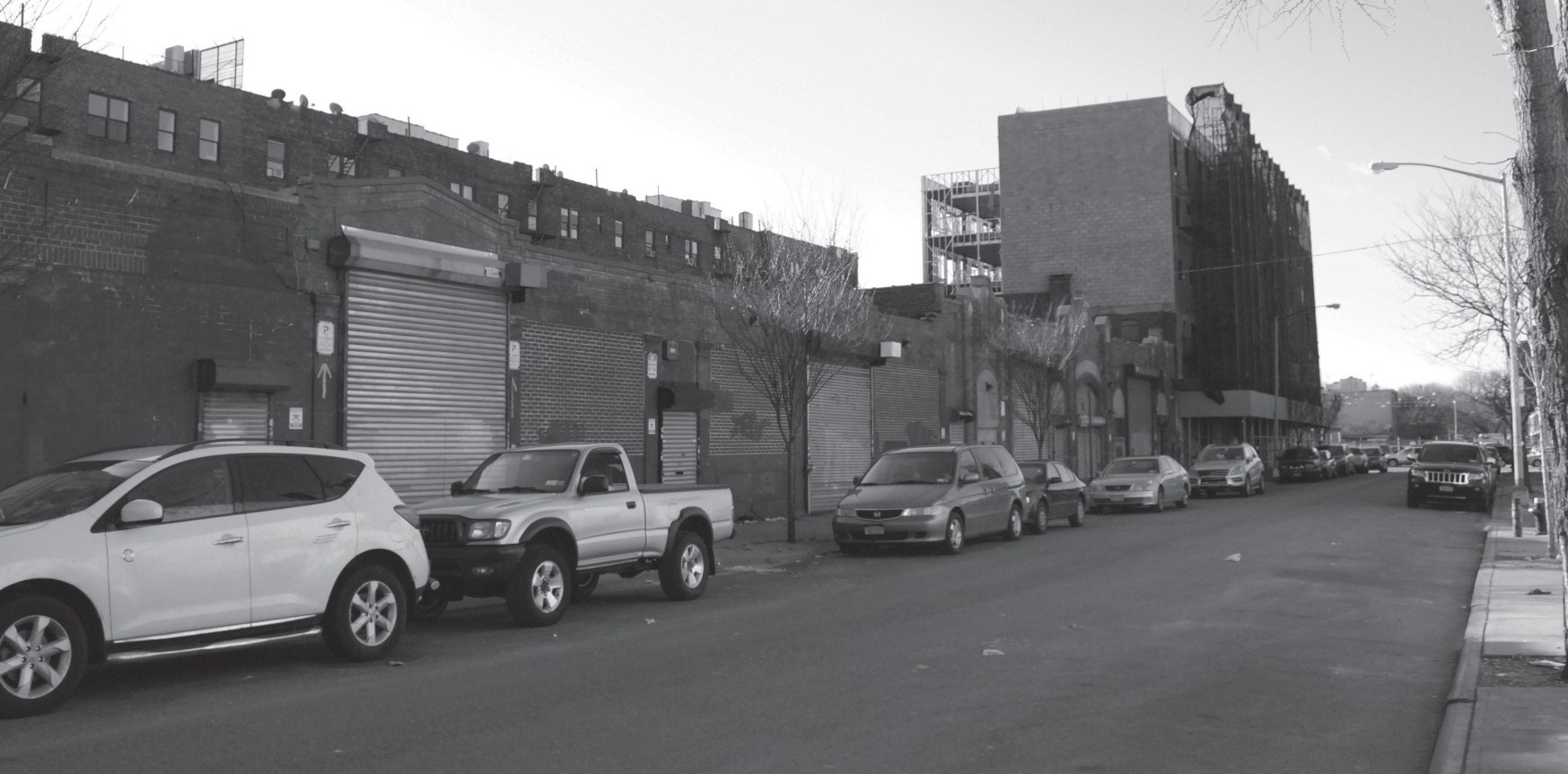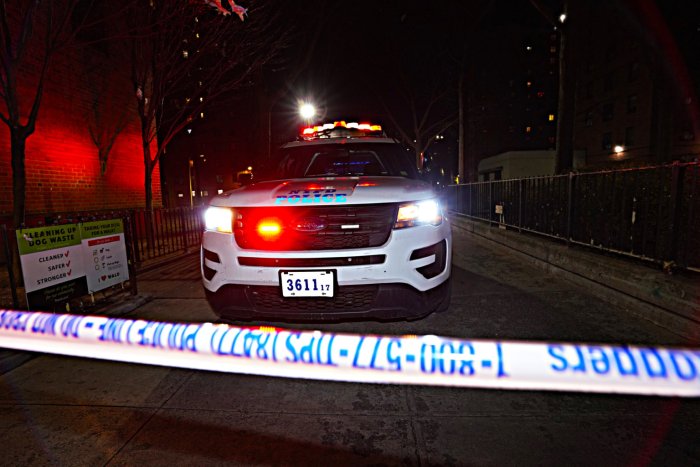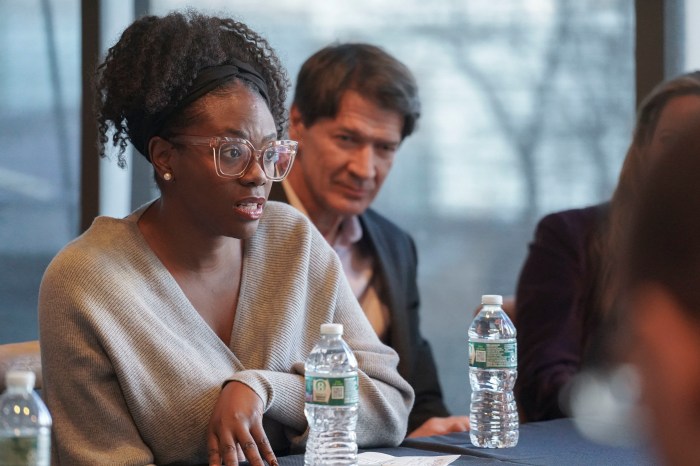But Results Of Abandoned Line Survey Disputed
Queens residents favorably viewed reactivating the long-abandoned Rockaway Beach branch of the Long Island Rail Road (LIRR), according to the results of a study that Assemblyman Phil Goldfeder and Queens College announced on Monday, Nov. 10, in Flushing.

The college’s Department of Urban Studies released a 98-page report gauging the public’s opinion on what to do with the Rockaway Beach line, a 3.2-mile tract between Rego Park and Ozone Park which last saw train service in 1962. Debate over its future heated up in recent months with the emergence of the QueensWay, a nature trail and bike path proposed for the rail line that, its proponents claim, will rival High Line Park in Manhattan.
The survey asked residents to choose from four different options for the Rockaway Beach line: reactivating rail service, developing the QueensWay, creating a hybrid rail-park plan or leaving the line fallow. Goldfeder touted the plurality of respondents (33.9 percent) who favored re-introducing some form of rail service. The QueensWay came in second with 28.1 percent, followed by a hybrid plan with 18.2 percent and the as-is option with 10.2 percent.
“Our best and brightest local Queens experts and students have produced the most comprehensive and unbiased study of the needs of our communities surrounding the abandoned Rockaway Beach rail line,” Goldfeder said.
“Previously, we’ve had to settle for one-side studies by expensive, out-of-borough consultants paid, at taxpayer expense, to say that a park is the only option for the right of way,” he added, referring to individuals and organizations supporting the QueensWay plan. “Now … we have a complete picture. The results of this study clearly show that reactivating the Rockaway Beach rail line is the best, most cost-effective way to decrease commute times, improve access to existing parkland and grow our small businesses in Queens.”
Even so, the results were based on what turned out to be a small sample size. Surveys were sent to 5,000 residents and 800 businesses within a half-mile of the Rockaway Beach line and all of the Rockaway Peninsula, but only 363 valid resident responses (7.26 percent) and 44 business responses (5.5 percent) were received.
“While these results demonstrate a preference for the transportation option, they are within the margin of error of the survey,” the report noted, “and so cannot be taken as statistically significant.” The margin of error was plus or minus 5.2 percent.
The small return produced some surprising results, it was noted, as a higher percentage of residents living in Forest Hills, Glendale and Rego Park (39 percent) favored reactivation- while 36 percent of Rockaway respondents favored the QueensWay option.
Proponents of rail reactivation have long argued the service would greatly reduce commute times for southern Queens residents and, in particular, those living on the Rockaway Peninsula.
However, the report indicated that two-thirds of all respondents indicated they would use a reactivated Rockaway Beach line for their commutes. Nearly half of all business owners also stated restoring rail service would have a “significant positive” impact on their business.
Many survey respondents also expressed concern that the QueensWay plan would attract greater vandalism and other crime to their communities. The report also sought to dispel the notion of the QueensWay filling a perceived void in parkland, noting that families living close to the line “have access to more parkland per resident per acre” than the average city resident.
Goldfeder was joined by Queens College President Félix V. Matos and a host of elected officials offering support for reactivating the Rockaway Beach branch, including Rep. Jerrold Nadler, who serves on the Congressional Subcommittee on Highways and Transit; Representatives Gregory Meeks and Hakeem Jeffries; State Sen. Tony Avella; and City Council Member Ydanis Rodriguez, who chairs the City Council Transportation Committee.
“While this is only the beginning, I have always believed restoring the rail line would speed up the pace of recovery for residents and local businesses and create hundreds of jobs while laying the foundation for a transportation network that accommodates our future growth,” saidMeeks, referring to the ongoing rebuilding of southern Queens and the Rockaways following Hurricane Sandy in October 2012.
“This study is an important step in the right direction toward increasing much-needed transit options for the residents of Queens,” Jeffries added. “The people of Queens deserve a more comprehensive mass transportation system, and this study could help bring about that result.”
QueensWay response
But the Trust for Public Land and the Friends of the QueensWay viewed the Queens College study as a confirmation of their own beliefs that local residents desire their proposal.
“We are pleased by the immense outpouring of support from the community and local elected officials for the QueensWay,” said Marc Matsil, the Trust for Public Land’s New York director. “They all recognize it will provide safe access to recreation for the 322,000 people who live within a mile [of it]; will boost local business; will provide alternative transportation choices; and will help fill a significant park equity void.”
QueensWay proponents claimed that the study “showed no major statistical preference” for rail.
They also attacked reactivation as a costly proposal, as groups estimated it could cost up to $7 billion to bring train service back to the Rockaway Beach line. Moreover, train service would pose other qualityof life problems and “eminent domain” issues since other properties lie adjacent to, or even encroach upon the line.
The Friends of the QueensWay also point to the availability of other transit options in the area, including proposed Select Bus Service for Woodhaven and Cross Bay boulevards.



































